
Roots
There exists a quiet understanding among those who care for textured hair, a shared intuition that certain rituals hold a profound weight in its preservation. It is a whisper carried through generations, a gentle knowing that some practices shield our delicate strands from the harsh realities of the world. One such practice, seemingly simple yet remarkably potent, involves the nightly donning of a bonnet.
Can this consistent act truly reduce hair shedding over time for textured hair? This question reaches into the very essence of hair biology and cultural heritage, inviting us to look closer at the subtle forces that shape our hair’s journey.
To approach this inquiry with depth, we must first lay a foundation, exploring the intrinsic characteristics of textured hair and the dynamics of shedding. Our hair, a marvel of biological engineering, possesses unique attributes that render it both wonderfully resilient and remarkably susceptible to external pressures.

Understanding Hair’s Architecture
The physical structure of textured hair plays a significant role in its propensity for shedding and breakage. Unlike straight hair, which typically has a round or oval cross-section, textured hair exhibits a more elliptical or flattened shape. This structural distinction results in natural curves and coils, ranging from gentle waves to tight, spring-like formations. These bends and twists, while contributing to the hair’s visual splendor, also represent points of vulnerability.
At a microscopic level, the outer layer of each hair strand, known as the Cuticle, consists of overlapping scales. In textured hair, these scales do not lie as flat as they do on straight hair. The inherent curvature of the strand means that these cuticle scales are often slightly lifted, making them more prone to snagging and friction.
When hair strands rub against each other or against external surfaces, these lifted cuticles can catch, leading to mechanical stress. This stress, over time, can weaken the hair shaft, making it susceptible to breakage.
Textured hair’s inherent curvature creates points of weakness along the strand, making its cuticle more vulnerable to friction and subsequent damage.

The Hair Growth Cycle and Shedding
Hair shedding is a normal, physiological process, a part of the natural hair growth cycle. This cycle comprises four distinct phases ❉
- Anagen ❉ The active growth phase, which can last for several years.
- Catagen ❉ A short transitional phase where hair growth stops.
- Telogen ❉ The resting phase, lasting a few months, where the hair remains in the follicle but is not growing.
- Exogen ❉ The shedding phase, where the resting hair detaches from the follicle and falls out, making way for new growth.
The American Academy of Dermatology suggests that an average person sheds approximately 50-100 hairs per day. For individuals with textured hair, the appearance of shedding can sometimes seem more pronounced. This is often due to the hair’s coily nature, which can cause shed hairs to remain intertwined within the surrounding strands rather than falling freely. They become noticeable during detangling or wash days, creating the perception of greater loss.
While shedding is a natural occurrence, excessive shedding or hair loss (which signifies a disruption in the growth cycle or damage to the follicle) can be a cause for concern. Mechanical forces, such as friction and tension, are significant contributors to hair breakage and can exacerbate shedding, particularly for textured hair. Understanding these foundational elements—the structural predispositions of textured hair and the mechanics of shedding—sets the stage for exploring how a seemingly simple bonnet can play a pivotal role in preserving hair health.

Ritual
With the foundational understanding of textured hair’s delicate architecture and the rhythm of its growth, our gaze now turns to the realm of daily practice, where conscious choices sculpt the reality of hair health. The consistent use of a bonnet, for many, is more than a mere accessory; it is a ritual, a deliberate act of care woven into the fabric of nighttime routines. This practice, passed down through generations in many communities, holds a practical wisdom that modern science increasingly affirms. How, then, does this gentle nightly covering translate into tangible benefits for hair shedding over time?
The essence of the bonnet’s protective power lies in its ability to mitigate external stressors that textured hair frequently encounters, especially during sleep. Our movements throughout the night, often unconscious and restless, create an environment of constant friction between hair strands and the pillow surface. This continuous rubbing can have detrimental effects on the hair’s delicate cuticle.
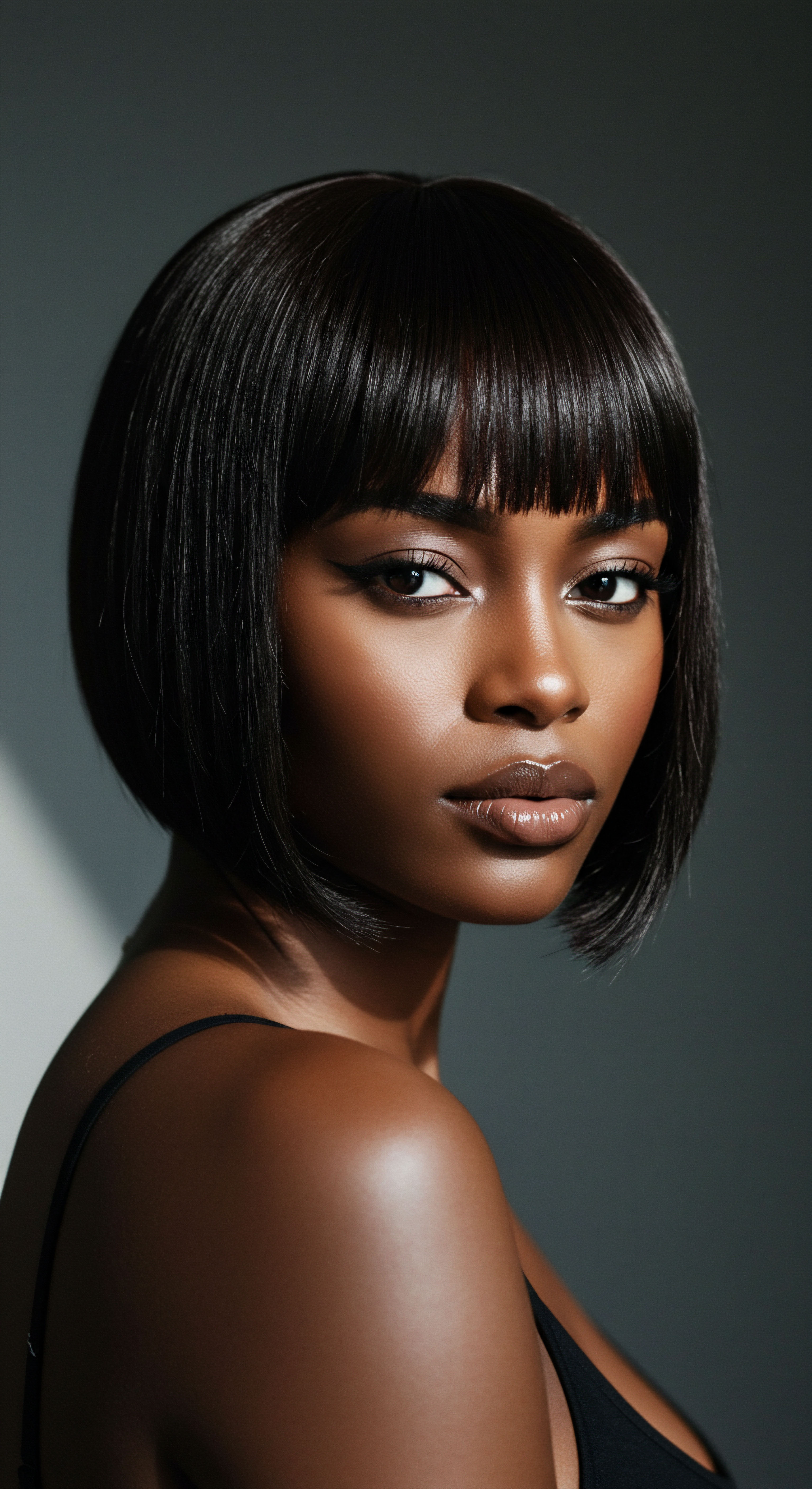
The Nighttime Sanctuary A Bonnet’s Role
Sleeping on rough surfaces, such as cotton pillowcases, generates significant friction. This friction abrades the hair’s outer cuticle layer, causing the scales to lift, chip, or even break. When the cuticle is compromised, the hair becomes more vulnerable to damage, leading to increased frizz, tangles, and ultimately, breakage.
Breakage, distinct from natural shedding, involves the hair strand snapping along its length, rather than detaching from the root. Over time, cumulative breakage can significantly contribute to the perceived reduction in hair density and length, mimicking or worsening natural shedding.
A bonnet, particularly one made of smooth materials like silk or satin, creates a protective barrier. These materials possess a low coefficient of friction, allowing hair to glide effortlessly against the fabric. This reduction in mechanical stress translates directly into less cuticle damage, fewer tangles, and a notable decrease in breakage.
A bonnet acts as a shield, creating a smooth, low-friction environment that significantly reduces mechanical damage to textured hair during sleep.
Consider the contrast ❉ a night spent tossing on a cotton pillowcase can leave textured hair matted, frizzy, and prone to knots upon waking. Each attempt to detangle these knots, even with the gentlest hand, can result in further breakage. Conversely, waking from a night with a bonnet often reveals hair that is smoother, more defined, and less tangled, requiring less manipulation and thus incurring less damage.

Beyond Friction ❉ Moisture Preservation
Another critical aspect of the bonnet’s efficacy lies in its ability to preserve hair’s moisture. Textured hair is inherently prone to dryness due to its coiled structure, which makes it more challenging for natural scalp oils to travel down the hair shaft. Cotton, a common pillowcase material, is highly absorbent and can wick away precious moisture from the hair, leaving it parched and brittle. Dry hair is significantly more susceptible to breakage.
Silk and satin, the preferred materials for bonnets, are less absorbent than cotton. They help to seal in the hair’s natural oils and any applied conditioning treatments, maintaining optimal hydration levels throughout the night. This consistent moisture retention supports the hair’s elasticity and strength, making it less prone to snapping under stress.
| Material Cotton |
| Friction Level High |
| Moisture Absorption High |
| Impact on Hair Increased breakage, frizz, dryness, tangles |
| Material Satin |
| Friction Level Low |
| Moisture Absorption Low |
| Impact on Hair Reduced friction, retained moisture, less frizz |
| Material Silk |
| Friction Level Very Low |
| Moisture Absorption Very Low |
| Impact on Hair Significant breakage reduction, optimal moisture balance, anti-frizz |
| Material Smooth materials like silk and satin offer superior protection by minimizing friction and preserving hair hydration. |
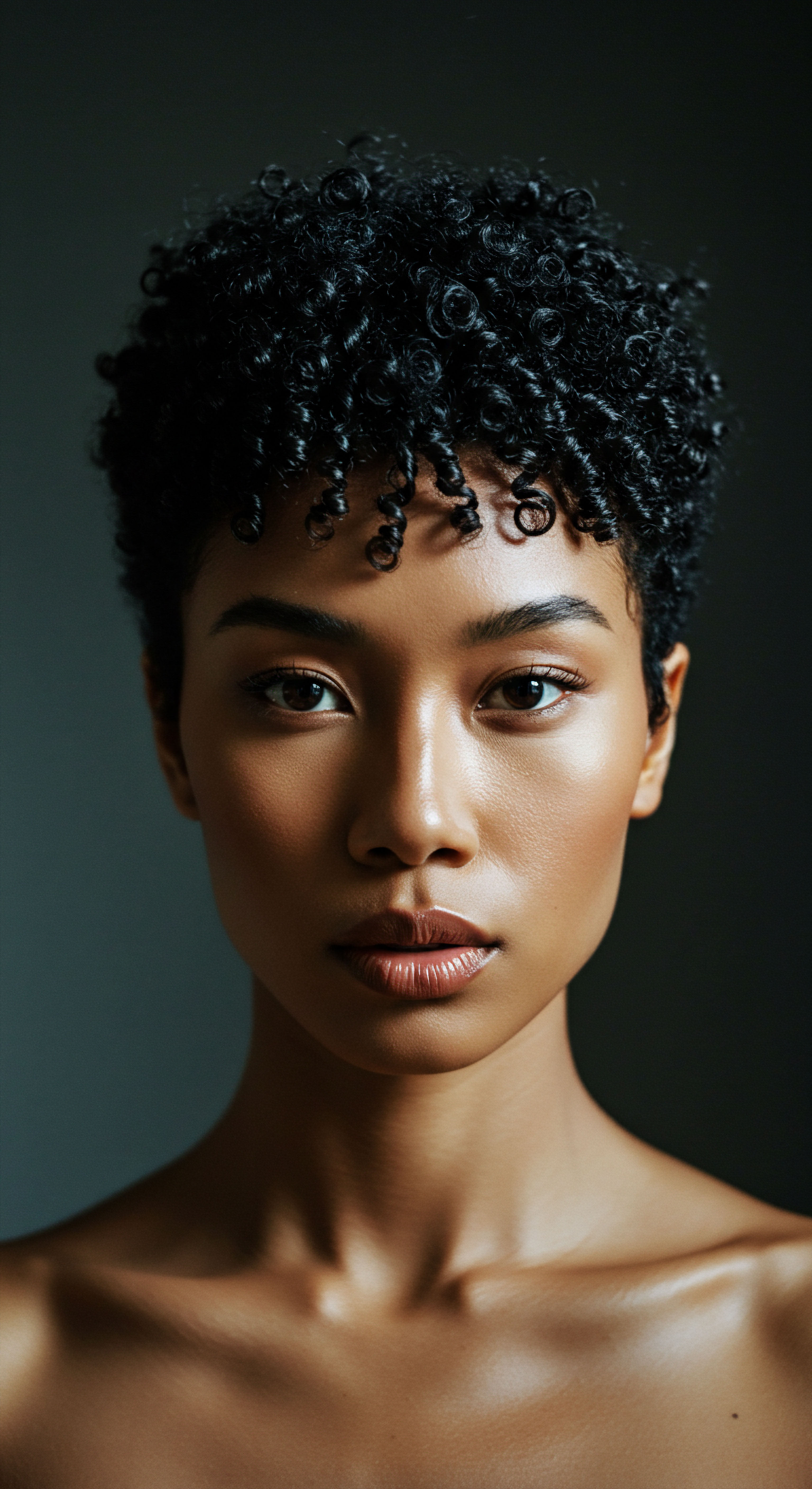
Maintaining Hair Styles and Reducing Manipulation
For many with textured hair, elaborate styling can be a time-consuming endeavor. Bonnets aid in preserving hairstyles, whether they are curls, braids, twists, or straightened looks. By keeping the hair contained and protected, bonnets help to prevent frizz, tangling, and flattening that can occur during sleep. This preservation reduces the need for daily restyling or excessive manipulation, which itself is a significant source of mechanical damage and potential breakage.
A practical consideration is the fit of the bonnet. While the benefits of smooth materials are clear, an overly tight bonnet can counteract these advantages by causing tension along the hairline, potentially leading to a specific type of hair loss known as Traction Alopecia. This condition arises from prolonged pulling on hair follicles. Therefore, selecting a bonnet that offers a snug yet comfortable fit, without undue pressure, is paramount for healthy hair care.
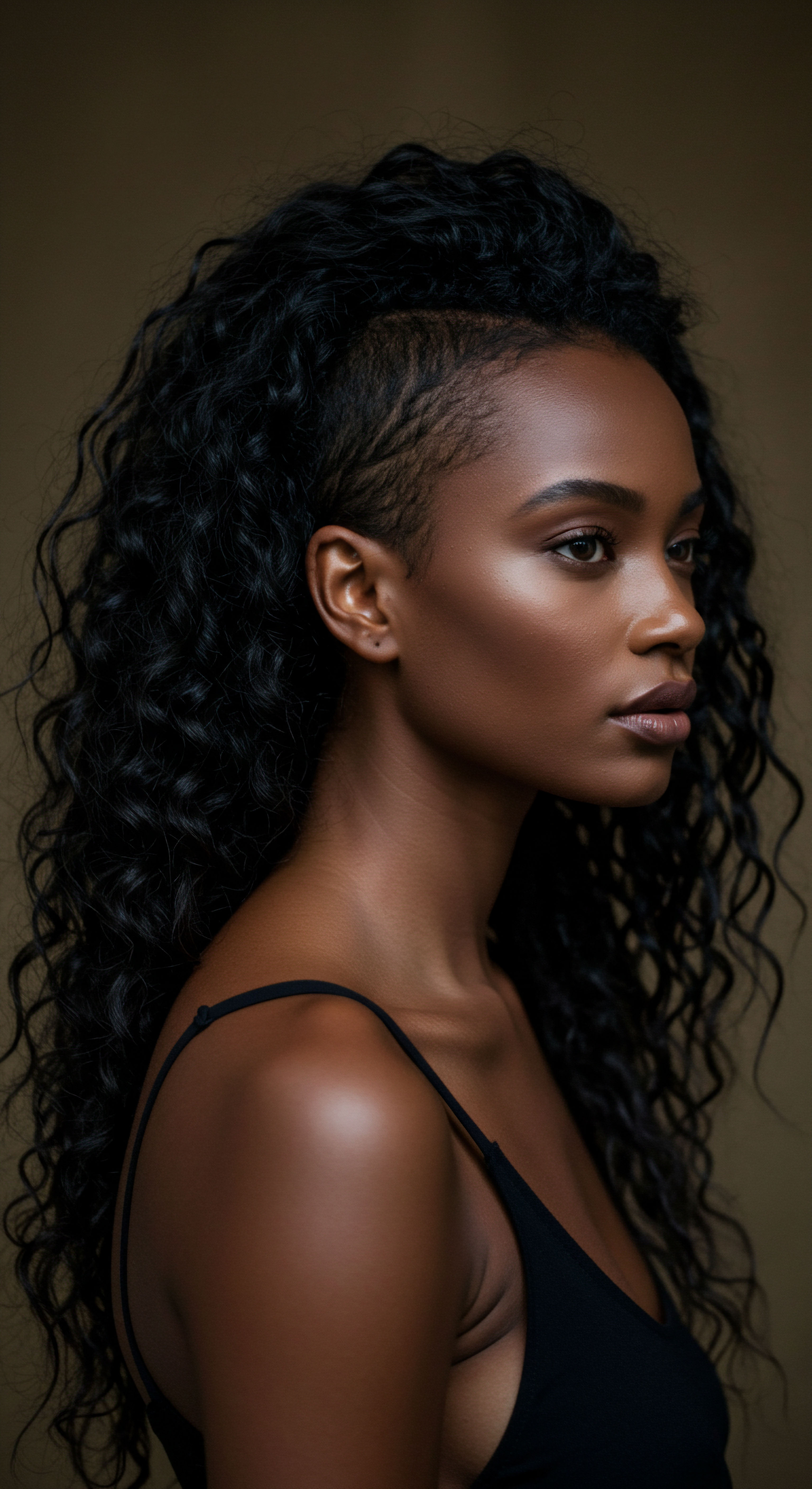
Relay
Moving beyond the immediate practicalities of nightly hair protection, we arrive at a deeper consideration of the bonnet’s enduring impact on textured hair health. This seemingly simple accessory carries a rich cultural weight, its history intertwined with resilience and self-preservation. Yet, its true efficacy in reducing hair shedding over time, particularly for textured hair, requires a more rigorous examination, one that synthesizes scientific data with lived experience and cultural context. How does consistent bonnet use influence the long-term health and shedding patterns of textured hair, moving beyond anecdotal evidence to reveal a sustained biological benefit?
The question of reducing hair shedding over time is complex, as shedding is a natural biological process. However, a distinction must be drawn between normal physiological shedding and hair loss resulting from breakage or damage. Consistent bonnet use primarily targets the latter, by creating an optimal environment for hair fiber integrity.

The Science of Reduced Breakage and Hair Retention
Mechanical stress, such as that caused by friction against pillowcases, is a primary driver of breakage in textured hair. The unique helical structure of textured hair, with its inherent twists and turns, makes it particularly susceptible to damage at these points of curvature. When hair rubs against a rough surface, the cuticle lifts, leading to eventual fracture of the hair shaft. This breakage, when frequent and extensive, can be mistaken for increased shedding, as it contributes to a noticeable reduction in hair volume and length.
A study highlighted the impact of silk materials on hair integrity. Clinical testing has demonstrated that silk bonnets can reduce hair breakage by up to 43% compared to cotton head coverings over an 8-week testing period. This significant reduction stems from silk’s naturally smooth surface, which minimizes friction both between individual hair strands and between hair and the fabric.
This protection is particularly valuable for individuals experiencing temporary shedding, such as postpartum hair changes, as it safeguards hair at its most vulnerable points, including edges, hairline, and nape areas. This empirical data provides a compelling case for the bonnet’s role in preserving hair length and density by preventing breakage.
Consistent bonnet use directly addresses mechanical damage, a significant contributor to perceived hair loss in textured hair, by creating a low-friction environment.
Beyond direct breakage, the reduction in friction also lessens the electrostatic charge that can build up in hair, particularly in dry environments. This static electricity causes hair strands to repel each other, leading to frizz and further disorganization of the hair cuticle, which can then snag and break more easily. By mitigating static, bonnets help maintain a smoother, more cohesive hair structure.

Hair Follicle Health and Scalp Environment
While bonnets primarily protect the hair shaft, their influence extends to the scalp environment, which is fundamental to healthy hair growth and reduced shedding. A well-hydrated scalp is less prone to dryness, flaking, and irritation. Bonnets, by preserving moisture, help maintain this optimal scalp condition. A healthy scalp environment is less likely to experience inflammation or microbial imbalances that can negatively affect hair follicles and growth.
Furthermore, consistent bonnet use reduces the need for frequent washing and aggressive styling, which can sometimes irritate the scalp and potentially stress hair follicles. By maintaining styles and reducing tangles, bonnets indirectly contribute to gentler detangling processes, minimizing pulling and tension on the hair roots. While direct scientific evidence linking bonnet use to reduced follicular shedding (as opposed to breakage) is still developing, the overall improvement in hair health and reduced mechanical stress on the hair shaft and scalp creates an environment conducive to healthy hair retention.
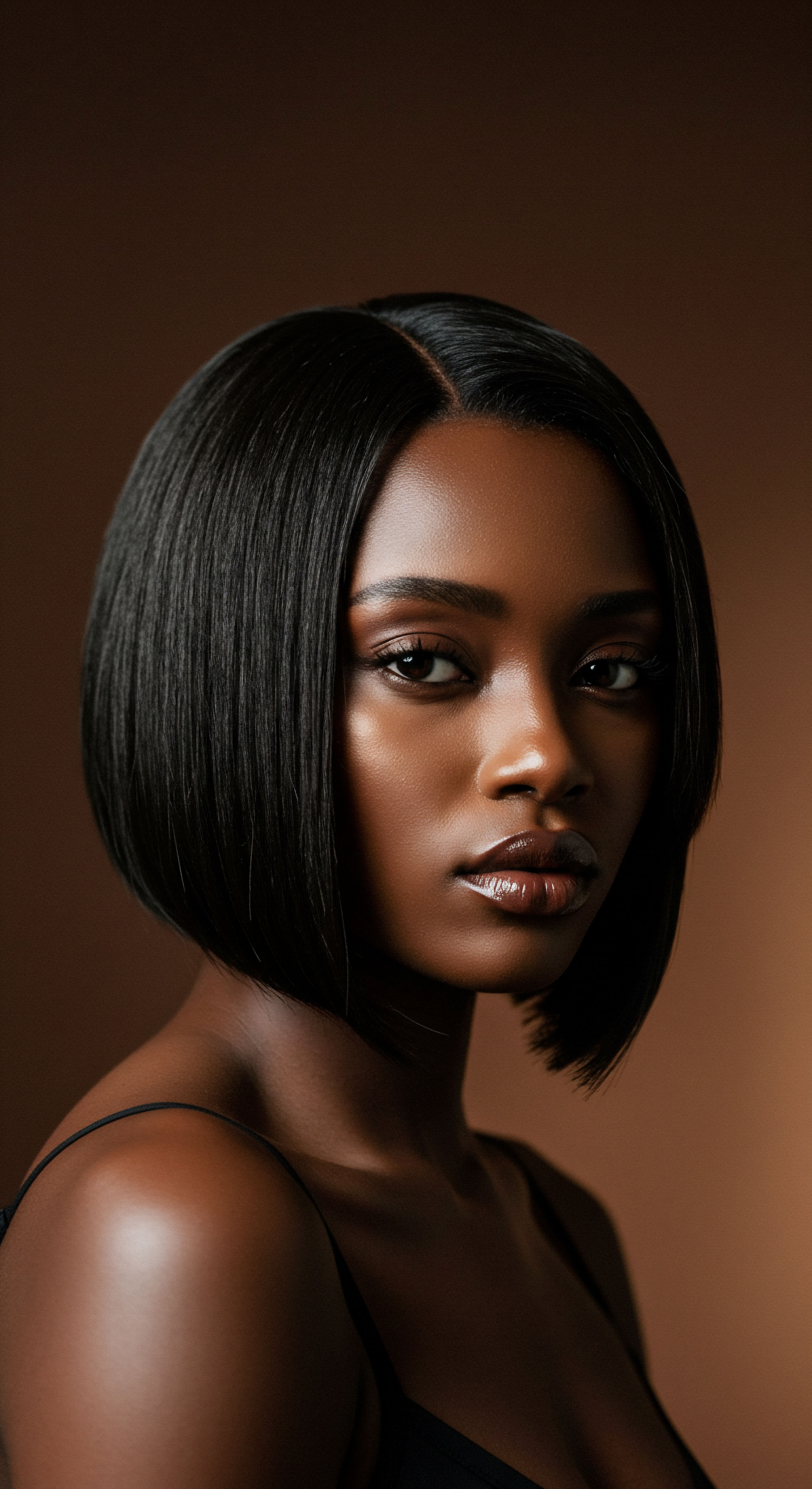
Does Bonnet Material Influence Long-Term Hair Retention?
The choice of bonnet material is not merely a matter of preference; it holds a scientific basis in its impact on hair health.
- Silk Bonnets ❉ Composed of natural protein fibers, silk is renowned for its smooth surface and minimal friction. Its protein structure, containing amino acids like sericin and fibroin, is remarkably compatible with human hair, leading to very low friction coefficients (0.7-1.2µ). Silk also absorbs less moisture (around 11%) compared to cotton (up to 25%), ensuring hair remains hydrated. This combination significantly reduces breakage and helps retain moisture, which is critical for the elasticity and integrity of textured hair.
- Satin Bonnets ❉ Often made from synthetic materials like polyester, satin replicates silk’s smooth surface. While not possessing the same protein composition as silk, satin bonnets still offer substantial benefits by reducing friction and preventing moisture loss more effectively than cotton. They are a widely accessible and effective alternative for protective nighttime wear.
- Bamboo Bonnets ❉ An emerging alternative, bamboo fabric is also smooth, breathable, and helps retain moisture. Some sources suggest it offers similar benefits to silk and satin while being more sustainable.
The material’s impact on moisture retention and friction directly influences the hair’s ability to resist breakage over time. When breakage is minimized, the hair appears fuller, longer, and healthier, giving the impression of reduced shedding, even if the biological shedding rate remains constant.

Potential Pitfalls and Considerations
While bonnets offer considerable benefits, their improper use can undermine their protective qualities.
- Tightness ❉ An overly tight bonnet, especially around the hairline, can exert continuous tension on hair follicles, leading to Traction Alopecia. This is a form of hair loss caused by prolonged mechanical stress and pulling on the hair roots. It is paramount to choose a bonnet that fits securely without causing discomfort or leaving indentations on the skin.
- Cleanliness ❉ Neglecting to regularly clean a bonnet can lead to the buildup of oils, product residue, and bacteria, creating an unhealthy scalp environment. This can potentially cause scalp irritation or infections, which could indirectly affect hair health. Regular washing of bonnets is as important as washing pillowcases.
The journey of textured hair is often one of careful cultivation and protection. The consistent, mindful use of a bonnet, rooted in both cultural wisdom and scientific understanding, stands as a simple yet powerful tool in this cultivation. By creating a sanctuary from mechanical stress and moisture loss, bonnets contribute significantly to reducing breakage, thereby fostering the appearance of less shedding and promoting healthier, more resilient hair over time. This sustained protection allows textured hair to flourish, preserving its length and vitality, truly supporting its journey of enduring beauty.
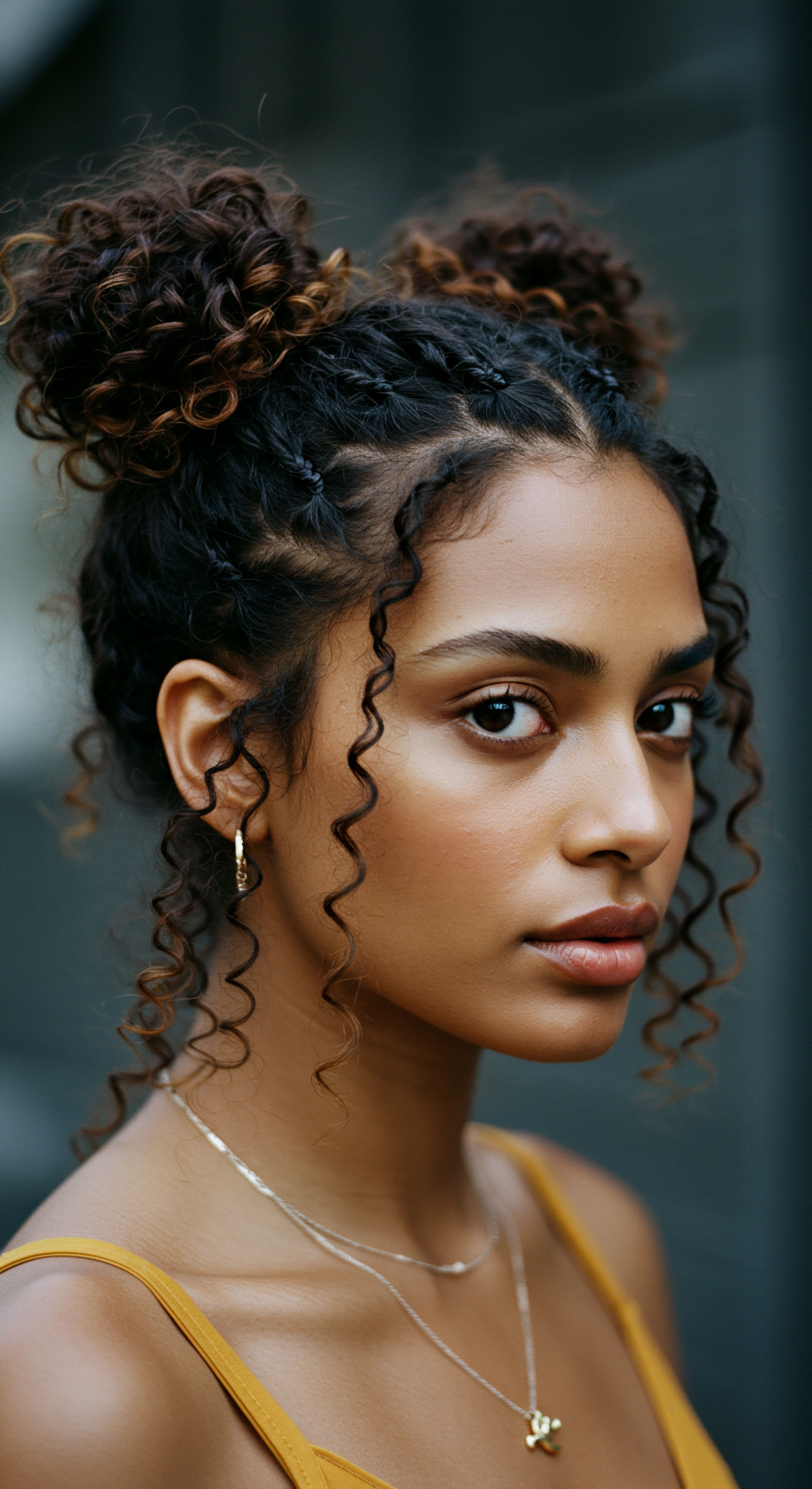
Reflection
As we draw our exploration to a gentle close, the quiet power of the bonnet for textured hair reveals itself not as a fleeting trend, but as a practice steeped in profound wisdom and practical benefit. From the very structure of a coil to the subtle mechanics of sleep, every facet points to the protective embrace of this nightly ritual. It speaks to a deeper understanding of care, one that honors the unique qualities of textured hair and seeks to preserve its inherent beauty. This journey through the science and tradition of hair protection invites a mindful approach, reminding us that sometimes, the simplest acts, consistently performed, hold the most enduring power for our hair’s serenity and strength.

References
- Schwartz, A. M. & Knowles, D. (1963). Frictional Effects in Human Hair. Journal of the Society of Cosmetic Chemists, 14(2), 67–73.
- Bhushan, B. Trinh, L. & Chen, N. (2014). Friction Dynamics of Straight, Curly, and Wavy Hair. Colloids and Surfaces B ❉ Biointerfaces, 123, 401–413.
- Robbins, C. R. (2012). Chemical and Physical Behavior of Human Hair (5th ed.). Springer.
- Gavazzoni Dias, M. F. R. (2015). Hair Cosmetics ❉ An Overview. International Journal of Trichology, 7(1), 2–15.
- Mirmirani, P. & Khumalo, N. P. (2017). Hair Care Practices and the Development of Traction Alopecia. Seminars in Cutaneous Medicine and Surgery, 36(3), 115-121.
- McMichael, A. J. (2007). Hair and Scalp Disorders in Ethnic Populations. Dermatologic Clinics, 25(3), 391-403.
- Franbourg, A. Hallegot, P. Baltenneck, F. Freyssinet, J. M. & Bouillon, C. (2003). The Human Hair Follicle ❉ A Unique Mini-Organ with an Array of Functions. Experimental Dermatology, 12(Suppl 2), 1-11.
- Khosa, M. S. & Shah, M. (2020). African Hair ❉ A Review of its Structural Properties and Management. Skin Appendage Disorders, 6(1), 1-8.
- Messenger, A. G. & de Brouwer, B. (2019). Hair Loss in Women ❉ A Comprehensive Approach. Clinical, Cosmetic and Investigational Dermatology, 12, 537-549.
- Randall, V. A. (2000). Androgens and Hair Growth. Dermatology, 200(2), 118-124.
- Paus, R. & Cotsarelis, G. (2008). The Biology of Hair Follicles. New England Journal of Medicine, 359(10), 1042-1051.